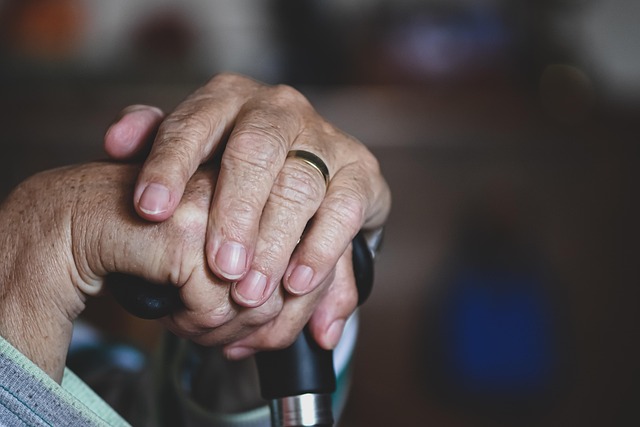Find Your Perfect Senior Home: Supportive, Safe, and Tailored to You
Finding the ideal senior home is about more than comfort—it’s about safety, support, and a lifestyle tailored to your needs. In 2025, modern senior living offers thoughtfully designed spaces, compassionate care, and personalized services that empower residents to enjoy every day with dignity and peace of mind. Discover how the right home can transform the golden years.

What are the supportive senior living options available?
Senior living encompasses a spectrum of care options designed to meet varying levels of need. Independent living communities cater to active seniors who require minimal assistance but desire a maintenance-free lifestyle with social opportunities. These communities typically offer private apartments or cottages with amenities like dining services, transportation, and recreational activities.
Assisted living facilities provide a middle ground for seniors who need some help with daily activities. Residents receive assistance with tasks such as medication management, bathing, dressing, and meals while maintaining a level of independence in apartment-style accommodations. These communities emphasize both care and quality of life through social programs and wellness initiatives.
For seniors requiring comprehensive medical care, nursing homes (skilled nursing facilities) provide 24-hour supervision with licensed healthcare professionals. Memory care communities specialize in supporting those with Alzheimer’s disease and other forms of dementia in secure environments with specially trained staff and targeted therapeutic programs. Continuing Care Retirement Communities (CCRCs) offer a tiered approach, allowing residents to transition between independent living, assisted living, and skilled nursing care as their needs change over time.
How can you ensure a safe and comfortable senior care environment?
Safety in senior living extends beyond physical security measures to encompass comprehensive approaches to resident wellbeing. When evaluating facilities, look for emergency response systems in each room, accessible design features like grab bars and wide doorways, and clearly marked exits with proper lighting. Fall prevention strategies, including non-slip flooring and removal of tripping hazards, are essential considerations.
Proper staffing ratios and qualifications significantly impact safety. Inquire about staff-to-resident ratios, particularly during overnight hours, and verify staff credentials, training programs, and turnover rates. A stable, well-trained team contributes to consistent care quality and stronger relationships with residents.
Comfort factors involve both physical and emotional considerations. Well-designed living spaces with adequate natural light, comfortable furniture, and personal touches help create a homelike atmosphere. Climate control, noise management, and air quality directly affect resident comfort. Additionally, the community’s culture plays a crucial role—observe how staff interact with residents and whether the environment feels welcoming and respectful. Many facilities now incorporate biophilic design elements, connecting residents with nature through indoor plants, natural materials, and outdoor spaces, which research shows can reduce stress and improve mood.
What personalized services are available for seniors in modern care facilities?
Modern senior living has evolved to offer increasingly personalized care experiences. Many facilities now develop individualized care plans through comprehensive assessments of physical, cognitive, and emotional needs, preferences, and goals. These plans are regularly reviewed and adjusted as residents’ conditions change.
Culinary services have transformed, with many communities offering restaurant-style dining with menu choices, accommodations for dietary restrictions, and cultural preferences. Some facilities provide cooking classes or host family-style meals to create social connections around food.
Wellness programming has expanded beyond basic exercise to include tailored fitness classes, aquatic therapy, yoga, and tai chi adapted for varying mobility levels. Cognitive wellness initiatives feature brain fitness programs, lifelong learning opportunities, discussion groups, and technology education. Personalized therapy services—physical, occupational, and speech therapy—help residents maintain or improve functional abilities.
Social and recreational activities have become more diverse, with communities organizing interest-based clubs, cultural outings, volunteer opportunities, and intergenerational programs. Technology integration enables personalized entertainment options, video calls with family, and health monitoring that adapts to individual preferences and needs.
What are the modern senior living trends for 2025?
The senior living industry continues to evolve with several emerging trends expected to shape facilities by 2025. Technology integration is accelerating with smart home features like voice-activated systems, automated medication dispensers, and motion sensors that monitor movement patterns without intrusive cameras. Telehealth capabilities are expanding, connecting residents with specialists without leaving their communities.
Design innovations focus on creating smaller, more intimate households within larger communities. These “neighborhood” models feature 10-15 residents sharing common spaces to foster closer relationships while maintaining private accommodations. Outdoor spaces are being reimagined with therapeutic gardens, walking paths, and outdoor classrooms that support physical and emotional wellbeing.
Wellness-centered approaches are becoming more holistic, addressing multiple dimensions of health—physical, emotional, social, intellectual, and spiritual. Programs increasingly emphasize preventive care, chronic disease management, and mental health support. Intergenerational programming is growing, with communities developing partnerships with local schools and universities to create meaningful interactions between residents and younger generations.
Sustainability initiatives are gaining prominence in facility design and operations, with energy-efficient buildings, reduced plastic use, farm-to-table dining options, and resident-tended gardens. Person-centered memory care models continue to advance, moving away from one-size-fits-all approaches to more individualized interventions based on personal histories, preferences, and abilities.
How do you evaluate and compare senior living facilities?
Evaluating senior living options requires a systematic approach focused on several key factors. Begin with location considerations, including proximity to family, medical facilities, and familiar neighborhoods. This geographical assessment should balance convenience for visitors with access to necessary services.
Conduct thorough on-site visits, preferably at different times of day and during meals or activities. During these visits, observe resident engagement, staff interactions, cleanliness, and overall atmosphere. Request to speak with current residents and their families about their experiences, as their feedback often provides valuable insights not covered in marketing materials.
Review state inspection reports and quality ratings available through resources such as Medicare’s Nursing Home Compare or state long-term care ombudsman offices. These official assessments can reveal compliance issues, complaints, and comparative quality metrics not immediately apparent during visits.
Carefully examine financial considerations, including fee structures, what services are included in base rates versus additional charges, and potential future cost increases. Understanding contract types—rental, ownership, or continuing care agreements—is essential for long-term planning.
Assess staff qualifications by inquiring about training requirements, specialized certifications (particularly for memory care), staff-to-resident ratios, and turnover rates. The quality and stability of the care team significantly impact day-to-day experiences.
Finally, review governance and ownership structure. Communities managed by non-profit organizations, faith-based groups, or established senior living companies may have different approaches to reinvesting in facilities and responding to resident needs compared to investor-owned properties.
Creating a standardized checklist incorporating these factors can help families objectively compare different options and identify the community that best addresses their specific priorities and concerns.
When comparing facilities, consider organizing your findings in a comparison worksheet that allows for side-by-side evaluation across multiple criteria. This methodical approach helps families make informed decisions based on comprehensive information rather than initial impressions or marketing presentations.
This article is for informational purposes only and should not be considered medical advice. Please consult a qualified healthcare professional for personalized guidance and treatment.




